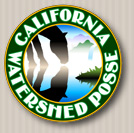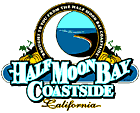|
October 1, 2001
Ms. Loretta Barsamian
Executive Officer
1515 Clay St., Suite 1400
Oakland, California 94612
Subject: STOPPP's Pollution Control Efforts and Eco-terrorism
Dear Ms. Baramian:
On September 11, 2001 the Bay Area lost one of it's finest environmental protection soldiers. Alan Beaven, former Chief Clean
Water Act Legal Counsel for our non-profit Half Moon Bay Coastside Foundation aka Save Our Bay died on the terrorist hi-jacked United Airline Flight 93 bound for San Francisco. Alan's fearless passion was the protection
of the Bay Area's drinking water, its quality and the watershed's natural systems. He was instrumental in the formation of the SOB Foundation's EnviroBank and the Watershed Quality Protection Partnership MOU. Alan's
last endeavor on behalf of the WQPP was to bring the new owners of an illegal landfill into full compliance. This open space landfill has no NPDES Stormwater Permit, as required by the Clean Water Act, 33
U.S.C. Sec.1311(a) and has the potential to pollute, if it is not already doing so, the steel head stream Arroyo Leon, it's adjoining wetlands and coastal waters. Unfortunately, Alan did not live to see the fulfillment
of his efforts. On behalf of the WQPP and as a tenured guest on the San Mateo Countywide STOPPP TAC, I am requesting your support and that of the State RWQCB staff members Susan Gladstone, Habte Kifle and Ann
Crum, in fulfilling Alan's quest for the owners of the unlicensed landfill, Peninsula Open Space Trust - to come into full compliance.
This past week, our WQPP Executive Director, Oscar Braun provided an extensive
briefing to the FBI Terrorism Task Force outlining risk assessment for the SFPUC and Peninsula watershed unsecured areas and suspected eco-terrorist activities in San Mateo County. San Mateo County harbors many
organizations that have gone to extreme measures to prevent the sustainability of SF Peninsula communities dependent on the Hetch Hetchy regional water system. These organizations have lobbied for decades that the
Peninsula coastal zone, which comprises 75% of Peninsula watershed, should only be provided substandard levels of law enforcement, fire protection, water , sewer, emergency access roads and other infrastructure
elements required to sustain watershed dependent communities and their natural systems. The Natural Resource Defense Council 1999 & 2000 report has identified San Mateo County as containing the most
polluted waters in the Bay Area, posing the highest level of risk to the publics health and safety. Decades of a anti-infrastructure policies has virtually killed the SF Peninsula's urban watershed.
The Bay Area's drinking water supply is at greater risk now more than ever: From disruptions and shortages in the event of a Peninsula watershed wildland area firestorm, drought or
arson/chemical/biological terrorist attack. All Bay Area community elected officials should take immediate steps to reduce the risk of a catastrophic outage for more than 2.5 million regional water system
users. Now is the time to increase our efforts to protect California's future by joining a new Watershed Quality Protection Partnership (MOU) and implementing it's goals.
I have enclosed the some of Alan Beaven's
case documents regarding his illegal landfill compliance efforts, EnviroBank WQPP program information and some background material on anti-community activities for your files.
Sincerely,
John Plock, RCE 26066
Chair, Environmental Review Director
CC. Honorable San Mateo County Board of Supervisors, Anna Eshoo, Byron Sher, Joe Simitian, Louis J. Papan,
Dianne Feinstein John Burton, Willy
Brown, James Asche, Steven Wert, Joe Naras, Arthur Jensen
|
|







